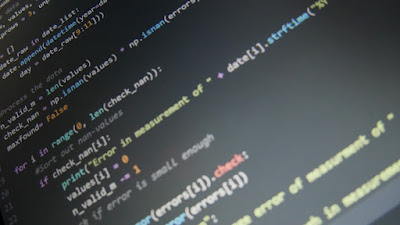Python, a versatile and powerful programming language, has gained immense popularity in the past decade, serving as the go-to choice for various domains, including web development, data science, artificial intelligence, and automation.
However, recent discussions and rumors have emerged, suggesting that Python is dying or losing relevance in the rapidly evolving tech landscape. In this article, we will examine the current state of Python and provide evidence to dispel the myth of its demise.
 |
| Is Python really dead |
Popularity and Community Support:
Python continues to enjoy an unprecedented level of popularity and community support. According to the TIOBE Index, which ranks programming languages based on their popularity, Python consistently maintains its position as one of the top programming languages worldwide.
It boasts a large and active community of developers, which contributes to its growth and advancement. The extensive community support ensures that Python remains up-to-date, with regular updates, packages, and frameworks.
Dominance in Data Science and Machine Learning:
Python's popularity skyrocketed with the rise of data science and machine learning. Its simplicity, readability, and extensive libraries, such as NumPy, Pandas, and TensorFlow, make it the preferred language for data analysis, visualization, and building machine learning models.
Python's dominance in this field is evident from its usage in prominent frameworks like Scikit-learn, PyTorch, and Keras. As the demand for data-driven solutions continues to surge, Python's relevance in data science remains unrivaled.
Web Development and Backend Solutions:
While Python may not be the first choice for high-performance web development, it remains a strong contender for building scalable and efficient web applications. Frameworks such as Django and Flask provide a robust foundation for developing web-based solutions.
Additionally, Python's versatility allows it to seamlessly integrate with other technologies, making it a popular choice for backend development. With the rise of microservices and APIs, Python's role in developing web applications and RESTful services remains significant.
Automation and Scripting:
Python's simplicity and readability have long made it a preferred language for automation and scripting tasks. It serves as an excellent tool for writing scripts that automate repetitive tasks, system administration, and network programming.
Python's extensive standard library and third-party packages like Selenium and Beautiful Soup make it a powerful choice for tasks like web scraping and test automation. As businesses increasingly seek to optimize workflows, Python's relevance in automation and scripting is far from diminished.
 |
| Is Python really dead |
Adoption by Tech Giants and Open-Source Projects:
Python's widespread adoption by prominent tech companies and open-source projects is a testament to its continued relevance. Companies such as Google, Facebook, Dropbox, and Instagram heavily rely on Python for various applications, demonstrating its scalability and reliability.
Furthermore, Python powers numerous open-source projects, including popular frameworks like TensorFlow, PyTorch, and Django, which receive consistent updates and improvements. The thriving ecosystem of Python-based tools and libraries ensures its vitality in the foreseeable future.
Contrary to the rumors of its demise, Python remains very much alive and continues to thrive in multiple domains. Its popularity, community support, and dominance in fields like data science, machine learning, web development, automation, and scripting demonstrate its versatility and reliability. Python's simplicity, readability, and extensive libraries make it an excellent choice for both beginners and seasoned developers.
As technology evolves, Python will undoubtedly adapt and remain at the forefront of the programming landscape, powering innovative solutions and driving technological advancements.

0 Comments